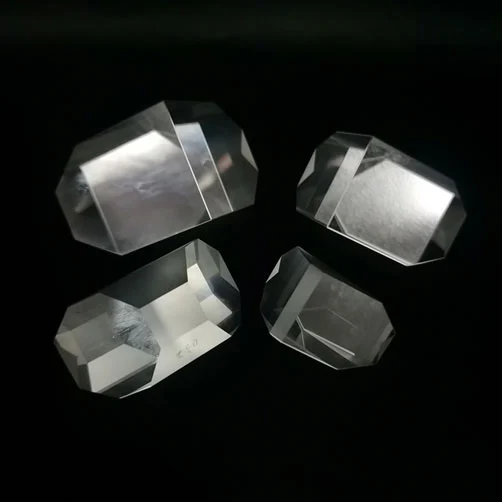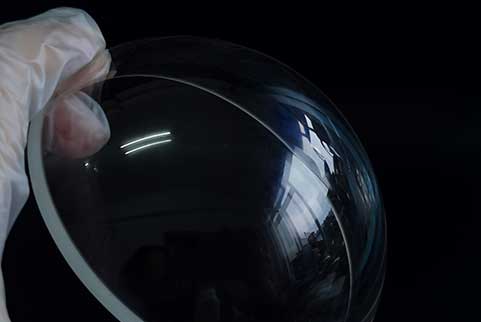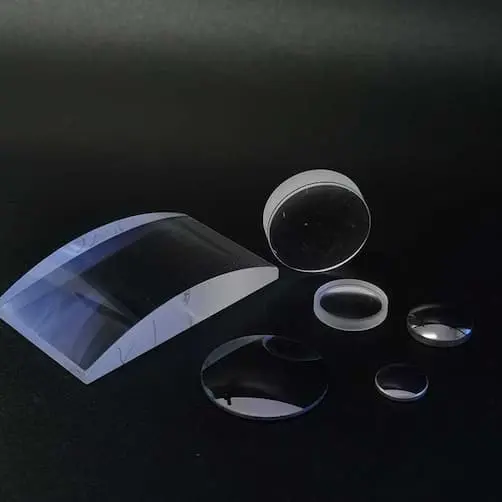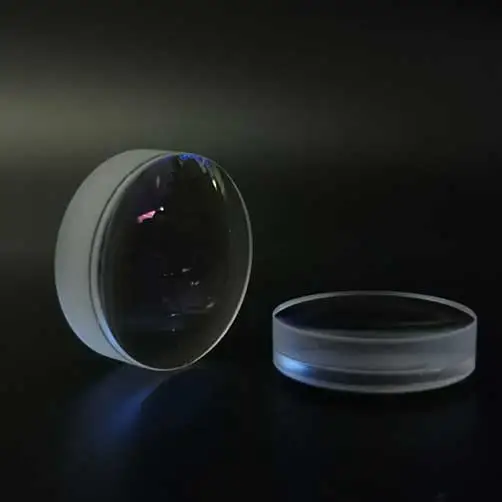
With the continuous development of the optical industry, prisms have different uses in different fields, and their applications are becoming more and more extensive, and the shapes of optical prisms are also different. With the continuous development and application of prisms, let us first understand what are the manufacturing processes of optical prisms.
Prisms are solid glass optics that are ground and polished to geometrically and optically distinct shapes, with angles, positions and number of optical parallels helping to define type and function.
In order to be successful in most applications, types of prism in optics must be manufactured to very tight optical tolerances and precision, and large-scale automated processes are completely infeasible for prism manufacturing due to variability in shape, size, and most importantly, the number of reflective surfaces.
Additionally, most high-precision prisms tend to be manufactured in small quantities, meaning that automated processes are unnecessary.
First, a piece of glass (called a "glass blank") of a specific grade and glass type is obtained, and the glass is sanded, or passed through a metal diamond wheel to produce a near-finished product.
Most of the glass is removed from this stage, resulting in a flat but still rough surface, at which point the size of the soon-to-be prism is very close to the desired specification.
This is followed by a fine grinding process to remove subsurface cracks on the surface; this stage is called fine grinding, and scratches left over from this stage will be removed in a second stage.
The glass surface should appear cloudy and opaque after the finishing process, and the optical prisms surface must be wet during the first two stages to speed glass removal and prevent overheating of the glass itself.
The third stage consists of polishing the prisms to the required precision according to the specifications, in this stage the glass will be rubbed against a polyurethane polisher wetted with a "slurry", which is an optical polish that usually consists of water mixed with pumice or cerium oxide polishing compound.
The exact timing of the polishing stage is very dependent on the required mirror specification. Once polishing is complete, the chamfering can begin. In this fourth stage, the edge of the prism will pass through a rotating diamond plate to slightly blunt.
After chamfering, the finished prism is cleaned, inspected (both manually and automatically), and if necessary, anti-reflective (AR) and/or metallic reflective coating to further help improve overall transmittance and/or reflectivity.
Although the optical glass manufacturing process needs to be more actively involved and may require more loops or operations due to the number of reflective surfaces on the prism, it is generated, smooth.
The entire optics manufacturing process requires constant adjustment and fixing of each mirror facet in progress, and fixing the prism in place involves two methods, blocking and contact.
Blocking requires the prisms to be arranged in a metal tool impregnated with hot wax, contact, on the other hand, is an optical bonding process at room temperature that fastens two clean glass surfaces together through their van der Waals interaction.
The contact method is used when high tolerances are required, as it does not require additional adjustments during the build, smoothing or polishing stages to account for the wax thickness between the prism surface and the contact block.
A skilled optometrist is required to manually inspect and adjust the surface of the prism being processed at every stage of the prism manufacturing process, from generation to blocking and contact.
As such, types of optical prisms require a very labor-intensive injection, and requires experience and skill to complete, and the entire process of making an optical prism usually requires a considerable amount of time, work, and concentration.
Penta Prism
Penta prism is one of the constant angle 90-degree beams.
a. Camera System
b. Testing System
c. High Angle Tolerance
d. Large Dimension
Roof Prism
Roof prism is often used in very compact binoculars.
a. Small Size
b. Pyramid 1'
c. High Volume
d. High Testing
Right Angle Prism
Right angle prism is the 90 degree prism.
a. Standard Prism
b. Various Material
c. Differnet Coating
d. Good Price
Contact us for more info!



